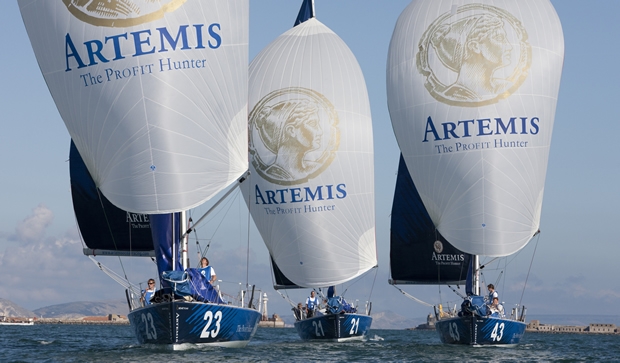
Free ticket to la Solitaire
The first Artemis Offshore Academy scholarship winner, Sam Goodchild, this summer will enjoy a fully funded Figaro campaign, including participation in the all-important La Solitaire. While there was some great competition between the final eight who attending this winter’s Figaro training down in La Grande Motte, including the likes of Route du Rhum Class 40 winner Phil Sharp (who we suspect was the runner-up) and Olympic 49er medallist Simon Hiscocks, in the end Goodchild proved the stand-out candidate, not only coming out on top in the racing but also demonstrating good communication and the multitude of other skills required of a modern day world class singlehanded offshore racer. Aged 21, Goodchild, the selectors felt, also showed “potential”, which is certainly true: He is set to be the youngest competitor in this year’s Solitaire du Figaro.
Despite his annoyingly young age, Goodchild has already achieved a lot in a diverse range of disciplines. On the one hand he was both the Student and Youth National Match Racing champion back in 2008, on the other he signed on as part of the Volvo RYA Keelboat Squad as its youngest member in 2006 which the following year got him on board the Hugo Boss Volvo 60 on delivery trips from Portsmouth to Halifax and from Hawaii to Indonesia, putting some 9000 miles ocean time into his log-book.
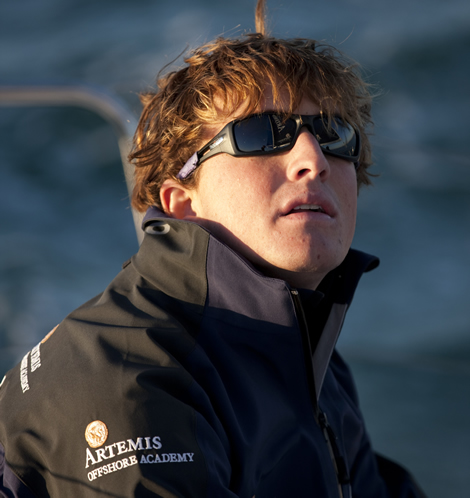
While this might seem inconsequential, Goodchild states: “Everything I have done offshore to date is via people I’ve met through doing that or from the experience of having that under my belt. So the skipper of that boat [the Hugo Boss VO60] was Andy Tourell, who is now involved with Artemis and he introduced me to this [the Academy]. I guess that was my small break into the offshore circuit.”
Since then Goodchild has done several other transatlantic deliveries, mostly on Class 40s and worked on various shore team - for Mike Golding in the build-up to the last Vendee Globe, for Artemis and for Peter Harding’s Class 40 40 Degrees, sailing on board for the class’ first world championship in 2009, which they won.
Thedailysail first came across Goodchild when in 2009 he bravely attempted to get selected for the French equivalent of the Artemis Offshore Academy scholarship, the Challenge Espair Region Bretagne (read about this here).
“I don’t think it has quite struck me yet,” Goodchild admitted when we spoke to him last week of his win. “It wasn’t that long ago when I was watching Jonny [Malbon] set-off [on the Figaro] thinking ‘I wish I could do that’, but not thinking it would happen six months later...
“Rod Carr [who was one of the Artemis Offshore Academy selectors] said to me – the main thing I had going for me was potential because I didn’t have a specific strength in anything, but I had a bit of knowledge and I was more of an all-rounder. There are a lot of strong sailors in there, but they are all strong in different ways, but I think because I come from a diverse background. I wasn’t necessary the best in anything but I had a bit of knowledge in most things.”
During the training in La Grande Motte, the Artemis sailors had to compete on a variety of short, medium and long distance (two day) races and Goodchild surprised everyone, including himself, by initially dominating the former while Phil Sharp typically came out on top in the latter, although in the final long race Sharp was pipped at the post by Goodchild. “That was a really good race," Goodchild recalls. "We raced for two days almost, the whole time last place could see first place and everyone in between. It was only in the last 10 miles where Phil was doing quite well and then he thankfully went the wrong way and I went the right way.”
As to the inshores, Goodchild said he was expecting either Nick Cherry, himself a three time UK National Match Racing Champion, or Simon Hiscocks, the double Olympic 49er medallist, to come out on top. However on their first set of inshores it was Goodchild who came ashore with three bullets.
“What Simon said to me after the first inshore races we had - he reckoned it was because I am quite comfortable on a boat because, since I was weeks old I have lived on a boat, we lived on a cruising boat in Grenada for eight years. So I could get my head out of the boat. Also when I was match racing, I started on the bow and then got back to the helm. And when I used to sail back in Grenada on racer-cruisers, I always did all the positions, never somewhere specific, so coming to do it on the Figaro it was more just getting use to how’s its done, as opposed to learning a new job. It comes back to not being a specialist in anything.”
The coaching in La Grande Motte with Franck Citeau and other French Figaro sailors, Goodchild says, was good, although the training was slightly hampered by the Artemis squad having to peak by the end of March, prior to the selection of the Artemis scholarship winner, while the French sailors there were aiming to peak in July ready for the Figaro class’ Generali Solo race in the Mediterranean, an event which has been revitalised this year. “They started off a little bit slower than us,” says Goodchild of their French training partners. “So the whole of January for them was mostly fitness. All the Artemis guys went out in January, but that ended up working quite well because we had caught up to knowing what we were doing, when we started racing with them in February and we weren’t just following them.”
Another issue that caused some headscratching at the outset was how a squad of nine was going to race four Figaros (five come the start of March) in what was supposed to be a singlehanded training camp. In fact former Artemis Mini sailor Ollie Bond was forced to drop out with a broken leg. Becky Scott was destined to sail the Artemis Mini, then others dropped out when they were had to go off and earn money or were otherwise distracted. Ultimately this left just Goodchild, Phil Sharp, Simon Hiscocks and Nick Cherry.
In addition to their schedule being different to the French, the Artemis sailors were also having to swap boats at weekly intervals whereas the French sailors were training on their own. This wasn’t ideal but equally was vital to ensure a fair contest for the scholarship. As Goodchild puts it: “You can’t have someone saying ‘I lost because my boat was slow’ because everyone has had a week’s racing in every boat.”
Typically they would finish a race on the Friday and carry out the change-over between boats at the weekend. “I had a list of stuff that I liked with my boat and I would go through and make sure all of those were as I liked them,” recounts Goodchild. “And then I’d go look at the sail and rig, because all the sails are a bit different and then set up the rig for the sail how I liked it and stuff like that. You had a weekend to sort it out and that ended up being enough, but at the same time the French guys they had their own boats for the whole year and didn’t need to make changes.”
In terms of the greatest lessons learned in La Grande Motte, Goodchild points out that the Figaro they race is a 30ft Beneteau production boat and while there is a lot that can be done to ensure it is on the pace, ultimately it isn’t a finely tuned grand prix racing machine like a Mini or an Open 60 is. So they typically learned most about the personal issues relating to singlehanded offshore racing, about optimising time and manoeuvres, etc. “One of the big things going offshore, which we’ve learned, is sleep management and speaking to Phil [Sharp] after that last offshore race, I think the problem was he was doing really well until the last 12 hours when he realised he hadn’t had enough sleep and he hit a wall. We had a small race last week and the same thing happened to me - we were pushing so hard the day before, that I didn’t want to go to sleep because it was slow and by midnight that night I couldn’t make any reasonable decisions whatsoever. I was all over the place.”
From here Goodchild gets to pick his boat from the Artemis fleet of five. This will get transported from La Grande Motte up to Concarneau ready for the Solo Concarneau race starting on 5 May. This will be Goodchild’s first qualifier for La Solitaire. Meanwhile in the short term the four other Artemis Figaros are heading for Lorient where training will continue for the Academy members, although with the scholarship now decided one imagines some of the motivation must be gone.
This will be followed through June and July with the Basse Normandie race, the UK Nationals (in Weymouth over 22-25 June with a feeder race from St Nazaire and a last race ending in Cowes), the Transmanche, culminating in the La Solitaire du Figaro starting from Perros-Guirec on 31 July, with the season ending with the Tour de Bretagne. It should be noted that, with the exception of the Solitaire, the plan at the moment is to have the other Artemis Figaros also competing in these events. They will also be used for Artemis corporate entertainment during the Round the Island Race and Cowes Week.
In the gaps between these Goodchild expects to return to the UK to get in as much training time with fellow UK Figarists Conrad Humphreys and Nigel King as he can. “We haven’t done much stuff in waves in the Med, so I am keen to get some practice in waves with whoever and whenever. Part of the plan at the moment is organising the season and speaking to the coach and the guys back at Offshore Challenges and trying to find out what we think are my weakest points and where I can improve the most before July and hopefully getting coaches in or working on it as much as I can to try and improve.”
With powerful allies on board such as former RYA Chief Executive Rod Carr, one hopes Goodchild will be able to draw on some of the top coaches and one design specialists the UK has to offer.
“One of the things I am keen to work on is my ‘micro-meteo’, which I think is quite big in the Solitaire fleet,” says Goodchild. “It is quite coastal – you can look at weather files before you leave and take them with you but you can’t download new ones. So a lot of it is reading what you’ve got and making the best of it.”
The Artemis Offshore Academy scholarship runs until the end of October this year after which Goodchild will revert to being a regular member again. “We go back into the same thing we did this year for next year, but I am keen to see if I can find a sponsor for next year, which isn’t Artemis. I can continue on from this year [in the Figaro class] definitely and there is a progressive thing: The first year is a ‘getting used to it’ year from what I hear. If I find my own sponsor, then it can be more similar to a French campaign, where you start in December and work up towards July rather than having to peak in March and then in July. Also [continuing with the AOA route] I wouldn’t know if I was doing the Solitaire next year until March. So there is a lot to it, but as I said the whole Academy is new and things may change.”
While it is going to be interesting to see how Goodchild gets on this season, of equal significance will be that for the first time ever the Figaro class will have major British presence and potentially seven boats competing: not just the five Artemis boats, but also Conrad Humphreys and Nigel King.
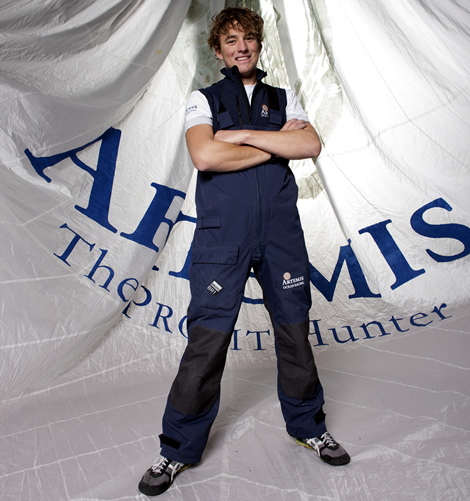

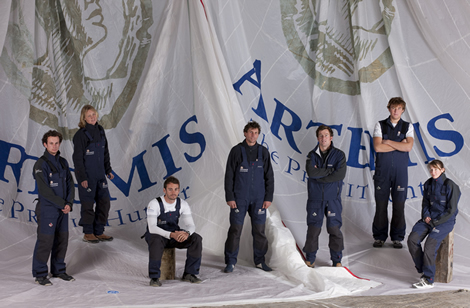
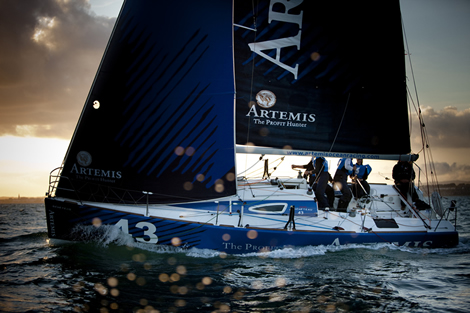









Latest Comments
Add a comment - Members log in